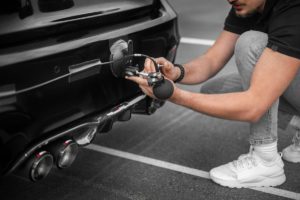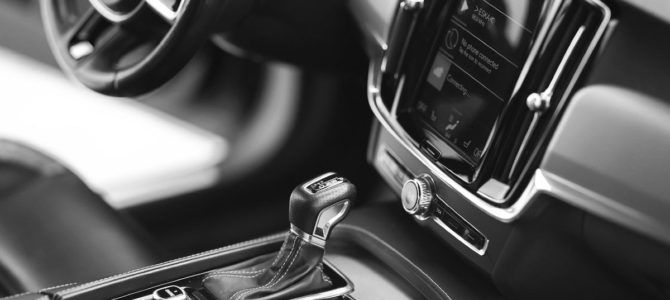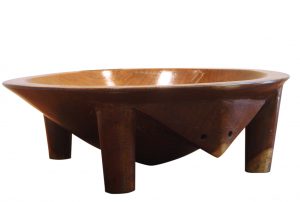For many enthusiasts, the passion for vehicles goes far beyond engine specs and exterior styling—it’s about the full experience, especially the interior. When it comes to personalising their ride, car lovers invest heavily in 4WD fitouts that enhance functionality and comfort for both off-road adventures and daily use. Others find joy in sourcing tailored Hilux accessories that bring a tough yet refined edge to their favourite utility vehicle. These custom touches reflect not just taste, but the driver’s lifestyle, making the interior more than just a space—it becomes a statement.
Step inside any enthusiast’s vehicle and you’ll likely be greeted with a cabin that tells a story. Some interiors are transformed into rugged command centres for outdoor excursions, while others become sleek sanctuaries of leather, lighting, and carefully curated audio. The interior is where the driver spends all their time, and for this reason, it holds a uniquely personal significance. Unlike exterior modifications that impress passers-by, the interior is designed for the person behind the wheel, making it the most intimate part of the vehicle.

Car interiors allow room for self-expression in ways the bodywork can’t. The choice of seat material, stitching colours, dash inserts, and infotainment upgrades all speak volumes. For those who drive regularly or take long journeys, the interior plays a vital role in shaping the experience. A supportive seat can reduce fatigue, ambient lighting can set the tone for a night drive, and a sound system dialled to perfection can transform the mood of a trip.
Technology has also elevated what’s possible inside the cabin. Enthusiasts now look for custom dash displays, wireless charging stations, integrated tablet mounts, and smart climate control systems—all tailored to their specific needs. Modern vehicles are almost like digital living rooms, and car lovers take this seriously. They want function, but they also want flair. And when they find the perfect balance, it’s incredibly satisfying.
Beyond comfort and convenience, there’s a growing awareness of how interiors contribute to driving performance. The position of controls, the weight and feel of the steering wheel, and even the resistance of a gear knob can affect how a driver connects to the vehicle. Enthusiasts who install sports pedals or change their steering wheel grips aren’t doing it for vanity—they’re doing it to improve control and response, often in subtle but important ways.
Another major drawcard is the idea of transformation. While changing a car’s exterior might be costly or even restricted by regulations, interior upgrades offer freedom. Swapping in a new seat, trimming out the headliner, or installing custom door cards can completely change the vehicle’s vibe without needing permits or approvals. It’s like home renovation, but on four wheels and often at a lower cost.
Then there’s the nostalgic factor. Many car lovers have memories tied to the interiors of older models—maybe the soft click of an old glovebox or the texture of a specific seat fabric. When restoring vintage cars, replicating these interior features becomes an emotional project. It’s not just about making it look good—it’s about bringing a moment back to life. In this sense, the interior becomes a time capsule, preserving not only aesthetics but also memories.
Group culture also plays a role. Enthusiast communities often bond over shared interior goals. Whether it’s a club dedicated to minimalist builds or forums where members swap tips on full-cabin soundproofing, the collective appreciation of what’s inside the car is a big part of the social experience. At meets and shows, it’s common to see doors flung open and seats tilted forward just so attendees can admire and critique the interior work. Some even bring ambient lighting or custom audio demonstrations to share their upgrade journeys in real-time.
Let’s not forget utility. In commercial and recreational vehicles, an upgraded interior isn’t just for show—it’s part of the job. Tradespeople design interiors for storage, access, and durability. Adventurers equip themselves for camping, cooking, or navigation. These are not luxury decisions, but practical ones that increase efficiency and safety while making every journey smoother. The interior becomes a workstation or a basecamp, depending on the user.
For families, interior upgrades are about making space comfortable and durable. Waterproof seat covers, extra rear seat storage, built-in entertainment systems, and protective flooring all contribute to a better everyday driving experience. It may not sound as exciting as high-performance engine tuning, but to a car lover juggling real life and automotive passion, these details are where enthusiasm meets everyday function.
There’s also an element of craftsmanship involved. Many interior upgrades require patience, skill, and a careful eye. Whether it’s wrapping a dashboard in suede or custom-stitching a gear boot, the effort involved in interior mods creates a deeper connection between the driver and the vehicle. This kind of hands-on customisation builds pride and satisfaction that few other mods can match.
In a world where many vehicles are becoming more homogenised in appearance, the interior remains a frontier for creativity. It’s a place where car lovers can be bold or subtle, tech-savvy or retro-inspired, functional or flamboyant. There are no hard rules—just personal preferences and the desire to make the ride feel like home.
At the heart of it, interior obsession isn’t just about aesthetics or status. It’s about the driving experience—the feeling of being in a space that understands and enhances the way you move through the world. Whether for daily commutes, weekend adventures, or simply parking somewhere quiet to enjoy the view, a well-designed interior invites the driver to linger just a little longer.
And maybe that’s what matters most to car lovers—the ability to step into their vehicle, close the door, and feel like they’ve arrived even before the engine starts.











 The Cinquecento in Florence
The Cinquecento in Florence
 island of Lombok and Labuan Bajo, a former fishing village at the western end of the island of Flores.
island of Lombok and Labuan Bajo, a former fishing village at the western end of the island of Flores.

 Innovation helped in this unavoidable interruption, and eventually helped develop a few of the pricing mayhem we see today. As the web ended up being the very first stop for travel shopping, we began looking for deals through keystroke commands. We stopped speaking with hotel clerks, rental car agents, and airline company appointment agents, and we boasted to our good friends about our inexpensive trips to Lake Como.
Innovation helped in this unavoidable interruption, and eventually helped develop a few of the pricing mayhem we see today. As the web ended up being the very first stop for travel shopping, we began looking for deals through keystroke commands. We stopped speaking with hotel clerks, rental car agents, and airline company appointment agents, and we boasted to our good friends about our inexpensive trips to Lake Como. Gradually, nevertheless, the convention has actually turned. As competitors amongst the websites warmed up, the hard-to-believe inexpensive fares needed some filtering. A too-good-to-be-true fare ($99 to Europe from California) generally included a catch (the $400, indirect, ticket house). And as
Gradually, nevertheless, the convention has actually turned. As competitors amongst the websites warmed up, the hard-to-believe inexpensive fares needed some filtering. A too-good-to-be-true fare ($99 to Europe from California) generally included a catch (the $400, indirect, ticket house). And as  Unfolding is exactly what Tom thinks is the altering paradigm of competitors with the World Surf League, alongside the aspects of culture and travel. Surfing towns from throughout PNG have actually descended on exactly what has been changed from a 12-bed surf camp into a tiny city of 80 camping tents plus bamboo and palm leaf structures. “My work in surfing
Unfolding is exactly what Tom thinks is the altering paradigm of competitors with the World Surf League, alongside the aspects of culture and travel. Surfing towns from throughout PNG have actually descended on exactly what has been changed from a 12-bed surf camp into a tiny city of 80 camping tents plus bamboo and palm leaf structures. “My work in surfing  The
The 
 California is one of the few vacation destinations that are suitable for whomever you’re traveling with. The Golden State offers attractions and activities for family travelers, couple’s retreats, and party groups. Additionally, finding cheap hotels in California can be a breeze if you know where to look. Check out the Cali hotspots below, and find those that best agree with your vacation needs.
California is one of the few vacation destinations that are suitable for whomever you’re traveling with. The Golden State offers attractions and activities for family travelers, couple’s retreats, and party groups. Additionally, finding cheap hotels in California can be a breeze if you know where to look. Check out the Cali hotspots below, and find those that best agree with your vacation needs. Whether you’ve just met, or have been married for 50 years, California is also noted as a prime destination for couples. Relax during the day with your sweetheart at the Sierra Hot Springs Resort and Retreat Center in Sierraville. Prepare for things to really heat up, as clothing is optional, and the resort allows you to reserve a private pool. In the evening, visit one of Cali’s romantic restaurants. One of 2010’s Open Table Diner’s Choice Winner, Pacifica Del Mar, is a great place to start. The breathtaking view, raw bar, vodka bar, and the restaurant’s commitment to sustainability are sure to keep you coming back. Stop by before 6pm for the early bird special, featuring mouthwatering dishes such as the sugar-spiced salmon or marinated top sirloin steak, for only $21.75 per person.
Whether you’ve just met, or have been married for 50 years, California is also noted as a prime destination for couples. Relax during the day with your sweetheart at the Sierra Hot Springs Resort and Retreat Center in Sierraville. Prepare for things to really heat up, as clothing is optional, and the resort allows you to reserve a private pool. In the evening, visit one of Cali’s romantic restaurants. One of 2010’s Open Table Diner’s Choice Winner, Pacifica Del Mar, is a great place to start. The breathtaking view, raw bar, vodka bar, and the restaurant’s commitment to sustainability are sure to keep you coming back. Stop by before 6pm for the early bird special, featuring mouthwatering dishes such as the sugar-spiced salmon or marinated top sirloin steak, for only $21.75 per person.